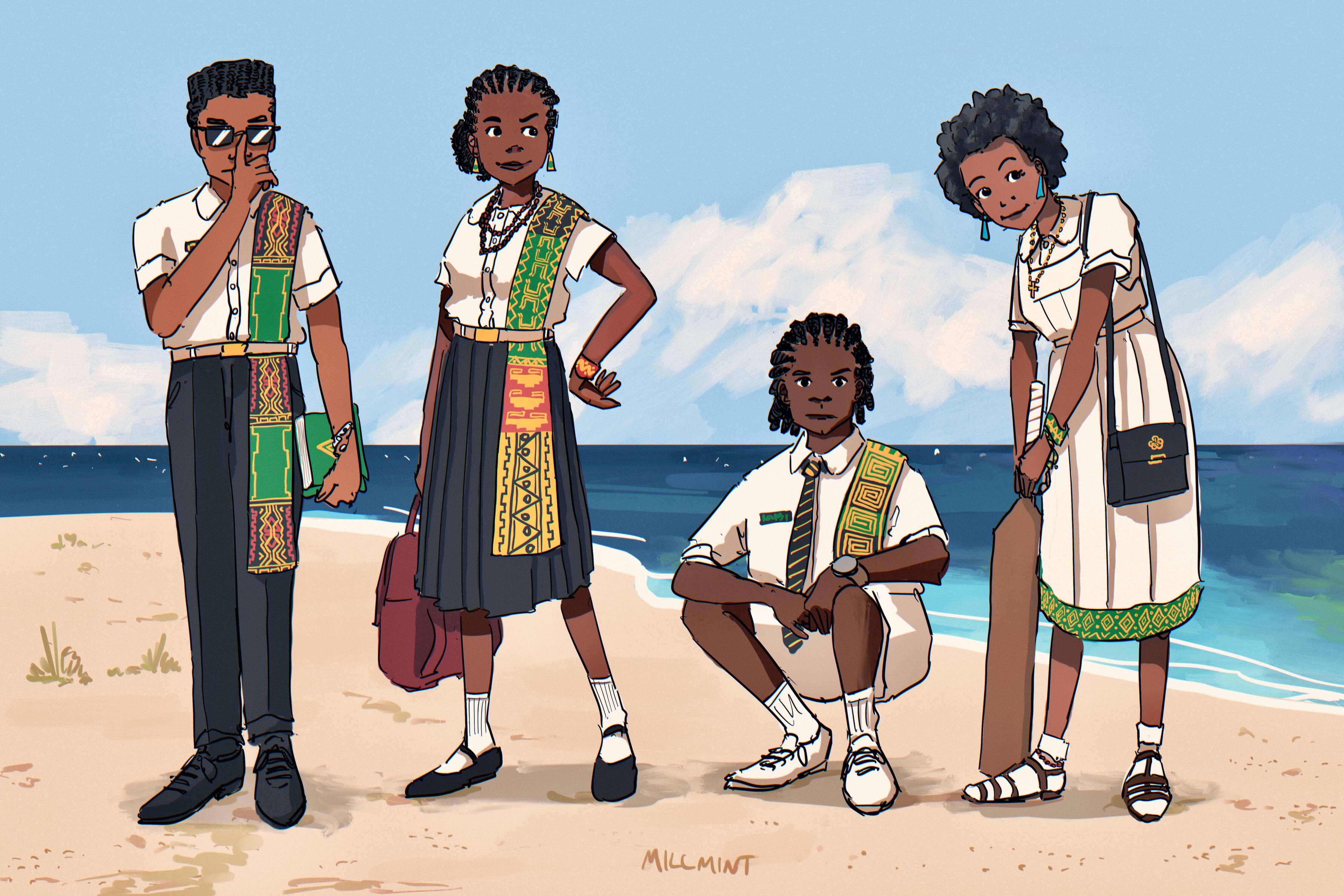NEW Story: Cocktail
Uniforms for All the Commonwealth

The residents of the Kalina Isles are mostly indigenous Caribs and Afro-Caribbean Garínagu, who in the 21st Century are part of a large multinational and multiethnic commonwealth of autonomous nation states. The Vekllei 4th Commonwealth, as it is now known, stretches all the way from Demon in the North Atlantic to the Antarctic Territories in the south. Although it consists of dozens of independent and self-governing nation-states, they are closely bound by shared political interests in the Atlantic and have significant commitments to the international Commonwealth parliament that legislates and shares features of these countries.
The education of young people is largely a burden of the Commonwealth, and so curriculums and resources are developed at an international level. This picture demonstrates student uniform in the Kalina Isles, and its fusion of standard Commonwealth items and local cultural features.
When the Kalina Islands joined the 4th Commonwealth in 2022, the requirements for a Commonwealth-produced uniform were straightforward.
- It should be comfortable and appropriate to the climate.
- It should celebrate cultural traditions and the diversity of the modern Caribbean Commonwealth while also reflecting shared conventions and values between member-states.
- It should be unbadged and uncomplicated except for accessories – you should be able to wear a white school shirt to your first job after leaving school.
The sashes most of these students are wearing are local patterns stitched themselves – sometimes with the help of a parent or grandmother. They are unique to the student and vary in colour and style, since the Kalina Islands consists of hundreds of islands with many aesthetic traditions. In this sense, they are not that different to the Vekllei student gi, which is also hand-stitched and unique to each person. Personalised, cultural items like these are a good example of the complicated intersection between pragmatic standardisation and geographic identity in 4th Commonwealth countries, and are distinctive of its member-states.
As in Vekllei, there are no restrictions on hair or accessories like jewellery, as long as the basic requirements of the uniform are met. Uniforms in Vekllei come from a social tradition, rather than one of conformity, and serve an important purpose in both the shared identity of the multiracial Commonwealth and the alleviation of poverty.
In this way, an object of control and conformity in other countries – a uniform – becomes cultural and personalised in the Commonwealth. Small subversions like these showcase the difference in thinking of the Commonwealth’s radical – and also very ordinary – shared project.